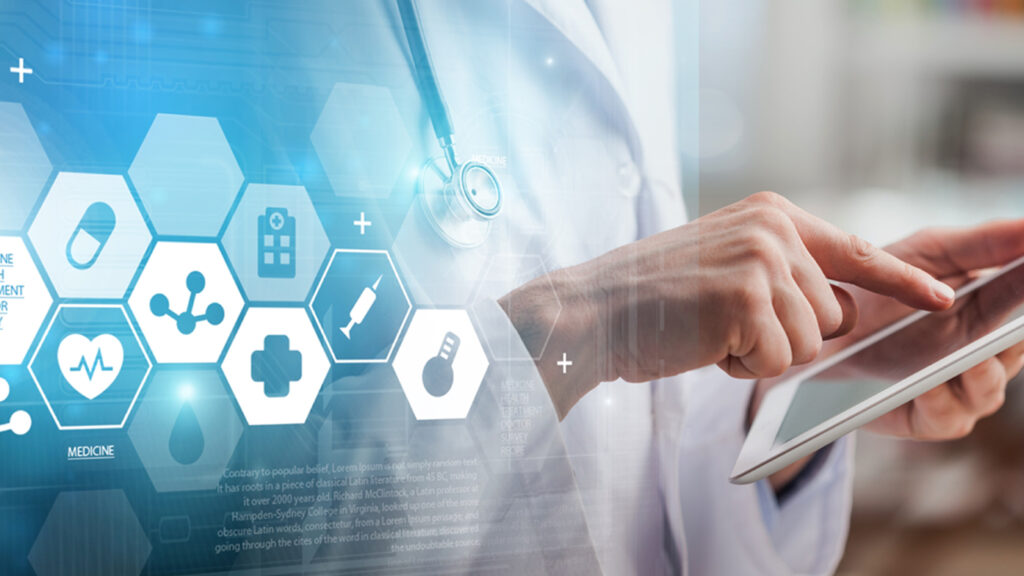Healthcare delivery is a system of people, institutions, and resources to deliver services that meet the health needs of a target population (NIH). These systems, however, are constantly shifting as new technology is made available.
For many hospitals and health centers, the adoption of new technology and digital processes is key because it helps them stay a step ahead through proactive data-tracking, real-time distance monitoring, automated tasks and more.
This year, healthcare delivery will get faster, smarter and in the context of COVID-19, safer. Here are three of the ways technology and digital advancements are transforming healthcare delivery.
Proactive Healthcare Delivery
A preventative care model is beneficial to everyone: there are fewer emergencies, staff are utilized more efficiently and patients experience better health outcomes. The shift to proactive, preventative delivery is largely attributable to the increased application of artificial intelligence (AI) in healthcare.
The technology behind AI delivers immense efficiencies but also mitigates potential risk by reducing the opportunity for human error. Many providers have integrated AI to automate medication reminders for patients, deliver personalized dosage recommendations, conduct symptom analysis and even help determine prioritization for the COVID-19 vaccine.
“We expect the healthcare industry to reap the analytical capabilities of AI techniques for delivering prompt and timely diagnosis and treatment,” according to the authors of Artificial Intelligence in Healthcare Databases.
This “delivery of prompt and timely diagnosis” through AI is what can help healthcare organizations shift from being reactive to proactive.
Virtual Healthcare Delivery
While the shift to virtual care has slowed after explosive growth earlier during the pandemic, virtual care is here to stay as innovations in telehealth and wearable technology advance.
For patients, the technology is convenient and mostly accessible; for providers, it’s efficient, flexible and affordable – saving them crucial costs after a difficult financial year.
Pre-pandemic, telehealth was already a growing delivery model. Data analyzed by the CDC from January-March 2020, before the onset of the pandemic in the U.S., shows telehealth visits were up 50% compared to the same period in 2019 (considering the starting point was relatively low).
Going-forward, a larger proportion of healthcare visits and interactions will be virtual as the technology behind telehealth continues to refine, offering more intuitive, easy-to-use interfaces with growing provider capabilities.
It should be noted that while telehealth has multiple positive benefits, like better utilization of emergency services and proactive diagnosis, it’s not the perfect solution.
For those without computers or access to WiFi, telehealth is inaccessible. As a solution, Deloitte predicts delivery will move toward a hybrid model of in-person and virtual care: “[By 2040] most health care will likely be delivered in localized health hubs serving as centers for education, prevention, and treatment in a retail setting. Additionally, local hubs will connect consumers to virtual, home, and auxiliary wellness providers.” (Source)
Another large facet of virtual care falls under remote monitoring technology and wearable devices. Remote monitoring systems and wearable devices record crucial health information at home, and often aid in medical diagnosis and treatment. These devices continue to become more sophisticated as technology advances.
Notable new technologies in this space include the BioIntelliSense BioSticker, a wearable COVID-19 screening solution that tracks respiratory function. The AppleWatch, one of the most popular consumer wearables on the market, now has fall monitoring technology. The app can distinguish a fall that has enough force to cause injury, and will automatically contact emergency services.
By utilizing the digital advancements in telehealth and remote monitoring technology, health systems have been able to deliver quality virtual care while minimizing exposure during the pandemic.
Real-time Data Delivery
The third way technology is transforming healthcare delivery is through Real Time Location Systems (RTLS). This technology helps track staff movements, supplies and patient monitoring in hospitals as it happens, rather than using retroactive data. This enables hospitals and healthcare departments to make better, faster decisions that improve the health and safety of patients and staff.
According to the National Institutes of Health, RTLS technology can reduce errors, lower costs and increase the speed of healthcare service delivery. Many large healthcare facilities are implementing RTLS to solve operational challenges and improve productivity among staff.
In large hospitals and healthcare facilities, it’s hard to track assets and workers due to their sprawling footprints and complex layouts. RTLS can locate available equipment right when it’s needed (such as heart pumps and ventilators), conduct contact tracing, improve patient security, detect hygiene levels and more.
In the context of the COVID-19 pandemic, these real-time data snapshots help reduce exposure and track possible contamination.
There are many factors that go into healthcare delivery, but it’s clear that technology is one of the most transformative factors in the shifts we see today.

 Shawn Janus
Shawn Janus

 Chris Zlocki
Chris Zlocki
 Adam Schindler
Adam Schindler